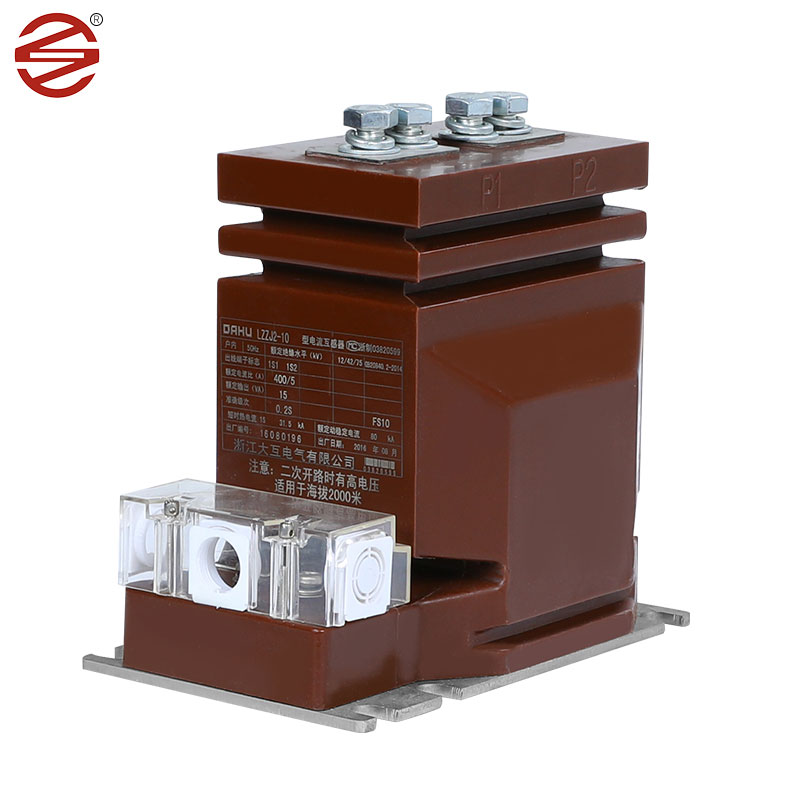
- English
- Español
- Português
- русский
- Français
- 日本語
- Deutsch
- tiếng Việt
- Italiano
- Nederlands
- ภาษาไทย
- Polski
- 한국어
- Svenska
- magyar
- Malay
- বাংলা ভাষার
- Dansk
- Suomi
- हिन्दी
- Pilipino
- Türkçe
- Gaeilge
- العربية
- Indonesia
- Norsk
- تمل
- český
- ελληνικά
- український
- Javanese
- فارسی
- தமிழ்
- తెలుగు
- नेपाली
- Burmese
- български
- ລາວ
- Latine
- Қазақша
- Euskal
- Azərbaycan
- Slovenský jazyk
- Македонски
- Lietuvos
- Eesti Keel
- Română
- Slovenski
- मराठी
- Srpski језик
What are some common applications of 11kv current transformers in the electrical industry?
2024-10-07

What is the working principle of Electric 11kv Current Transformer?
Electric 11kv Current Transformer works on the principle of magnetic induction. When the high voltage power line passes through the primary winding of the transformer, it creates a magnetic field that induces a secondary voltage signal in the transformer's secondary winding. The induced signal is proportional to the primary current flow, and it is then measured by an ammeter or a wattmeter.
What are the types of Electric 11kv Current Transformer?
There are two types of Electric 11kv Current Transformer: Wound type and Toroidal type. Wound type transformers have a primary winding that is physically wound around the core. The toroidal type of transformer has no primary winding and operates on the principle of a closed magnetic loop.
What are the applications of Electric 11kv Current Transformer?
Electric 11kv Current Transformers are mainly used for protection, measurement, and control in power systems. They are used in current measurement, protection relay operation, and for metering applications. They provide data for billing purposes, energy management, and fault analysis in the power grid system.
What are the benefits of using Electric 11kv Current Transformer?
Electric 11kv Current Transformers are easy to install, compact in size, and have a long service life. They offer highly accurate measurement data and reliable protection, making them the preferred choice for electrical application industries.
Conclusion
Electric 11kv Current Transformer has revolutionized the electrical industry. They have made it easier to measure, track and control energy consumption and ensured the safety and efficient functioning of power systems. Through their accuracy and long life, they remain an essential component in electrical power distribution systems.
Zhejiang Dahu Electric Co.,Ltd. specializes in the production of Electric 11kv Current Transformer. With a focus on engineering excellence, the company has been a leading manufacturer in the industry since its inception. Contact us at River@dahuelec.com for more information about the company and our products.
References
1. J. Wang, Z. Wang, Y. Li, and X. Zhang. (2015). Application of electric current transformers in power systems. Electrical Power Systems Research, 123(2), 42-50.
2. Y. Liu and L. Wang. (2017). Investigation and analysis of the error characteristics of the electric current transformer. IEEE Transactions on Power Delivery, 32(5), 2358-2365.
3. W. Ding, J. Li, and F. Zhang. (2019). A novel approach for identifying the transient response of electric current transformers. IET Generation, Transmission & Distribution, 13(7), 1250-1256.
4. Y. Li, X. Lu, W. Yin, and Z. Li. (2016). A new method for evaluating the coherence of electric current transformers. International Journal of Electrical Power and Energy Systems, 83(2), 25-30.
5. S. Huang and X. Zhang. (2018). A new calibration method for electric current transformers using an inverse algorithm. Electric Power Systems Research, 164(4), 175-180.
6. H. Qi and X. Wu. (2016). Application of electric current transformers in power quality monitoring system. Electrical Engineering, 98(3), 123-132.
7. J. Wu and L. Li. (2017). Theoretical analysis and design of a precision electric current transformer. Measurement, 105(1), 149-155.
8. K. Liu and Y. Zhang. (2019). Design and simulation of a novel electric current transformer for substations. IET Science, Measurement & Technology, 13(6), 876-880.
9. X. Wu, H. Qi, and H. Zhang. (2015). A high-accuracy electric current transformer based on magnetic modulation. International Journal of Electrical Power and Energy Systems, 65(3), 11-18.
10. L. Wang, X. Qin, and Y. Liu. (2018). A new algorithm for identifying the saturation characteristics of electric current transformers. IEEE Transactions on Power Delivery, 33(4), 1885-1892.



